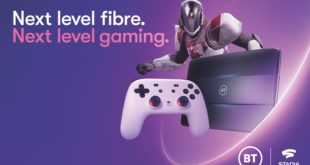The new year brings with it a sense of optimism and excitement about what we could do with the next twelve months. Even if we have projects left over from last year to tie up, returning to the office in a new year is different to coming back after any other break. It’s only a calendar, and it shouldn’t really make a difference. But it does. It’s a crossroads: the year change prompts people to celebrate their successes in 2012, and make fresh plans for 2013.
And to keep us on our toes, there will be new technologies and trends. The most successful developers this year will be those that perfectly time their adoption of those new technologies. Getting in early means you can secure early mover advantages, entrenching your position in the market before the masses of less insightful developers jump on board. That must be balanced, of course, against the market potential of each technology, and the need to ensure you don’t spread your talent or other resources too thinly.
As you make plans, here are some technologies and trends I think will be worth keeping an eye on:
• HTML5: It’s not the perfect solution for every application, but HTML5 has been winning popularity because of the relative ease with which applications can be ported across different platforms. The new Windows Store in Windows 8 provides a direct channel to market for those apps that work well in HTML5, so this is likely to increase the appeal of HTML5 as a primary development platform.
• Touch input: We’re used to tablets and phones having touch screens, where they are the main or only input mechanism. Ultrabook devices incorporate touch screens too now so that people can switch between the keyboard, mouse and touch screen, depending on what feels most intuitive to them at a particular time. Increasingly, people will expect their software to enable them to work using all these input options, and to let them switch between them whenever they want. The support of touch controls in Windows 8 helps to evangelise this idea. There will come a point where software that doesn’t enable this fluidity in accepting inputs will just feel broken. Hybrid computers that can be folded for use as a touch screen tablet or Ultrabook (with a keyboard) are coming on to the market, and make it convenient for people to change their hardware setup depending on the software they’re running.
• Cloud computing: Over the last few years, we’ve increasingly stored our emails, social interactions and photos in the cloud. The cloud also provides opportunities to synchronise across different devices, and as people increasingly use several devices during their day (a phone, a tablet on the commute and an Ultrabook at the office), there are fantastic opportunities for software developers who can make apps that are device-neutral, and enable people to pick up what they were doing (work or play) using whatever device they have to hand.
• Perceptual Computing: Perceptual computing is a hot trend for 2013, and is all about making computers more human in the ways they communicate with us. Adding two cameras to a computer, for example, can enable it to judge depth and interpret body language, so we can use gestures to control our computers. Sophisticated dual array microphones, already available in Ultrabook devices in the US, can enable the computer to act as a voice assistant, taking commands verbally and then breaking them down into separate instructions and carrying them out. For example, you might tell your computer to play a particular song, and it could find it for you first. I think we’ll see some exciting new games emerge using perceptual computing technologies. Intel is running a prize competition to stimulate ideas that make the most of perceptual computing, with a total of US$1 million up for grabs. Find out more about the Intel Perceptual Computing Challenge.
• Android: The green robot shows no signs of losing momentum. Android devices that run on Intel Architecture are available now, bringing more choice to the marketplace and creating new opportunities for developers to differentiate themselves by confirming their apps run well on Intel Architecture. Many games can run without any changes, and just knowing yours works can be a powerful marketing tool.
What trends do you expect to see in 2013?
—
This blog post is written by Softtalkblog, and is sponsored by the Intel Developer Zone, which helps you to develop, market and sell software and apps for prominent platforms and emerging technologies powered by Intel Architecture.

 MCV/DEVELOP News, events, research and jobs from the games industry
MCV/DEVELOP News, events, research and jobs from the games industry



